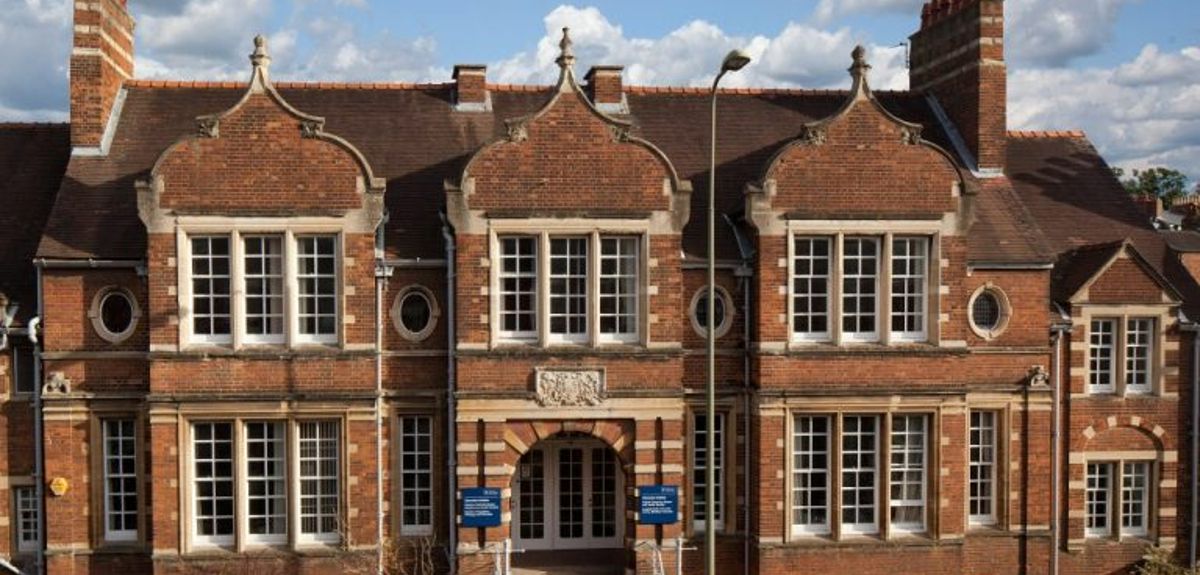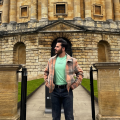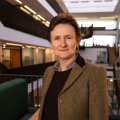
Student stories: Discovering the School of Rare Jewish Languages
Daniel Amir, DPhil candidate in Asian and Middle Eastern Studies at Pembroke, shares his excitement of discovering the School of Rare Jewish Languages and his experience with the programme so far.
In 2020 I made the jump and left my job at the BBC to read for a DPhil in modern Iranian Jewish history at Oxford. A major pull for me in returning to Oxford’s Asian and Middle Easter Studies for the doctorate was being surrounded by people working on everything from Biblical Hebrew to Classical Mongolian and Armenian under one roof. As an undergraduate I had spent time studying Persian and Urdu and living abroad in Istanbul and Jerusalem. I was looking forward to recapturing some of that variety once I was back at university.
Discovering the School of Rare Jewish Languages
But for a serial language learner like me, I imagined that beginning a DPhil in the middle of a pandemic would be an obstacle to this. I feared that Zoom might lack a sense of classroom community and motivation, or that opportunities to dip into new interests alongside my thesis research would be hard to find. Then, in a rare bolt from the blue, The Oxford Centre for Hebrew and Jewish Studies announced it would be launching the School of Rare Jewish Languages (OSRJL). Reading the announcement on Twitter, I could barely contain myself. In academia you sometimes get used to few people sharing your enthusiasm for niche topics, so when The Oxford Centre for Hebrew and Jewish Studies said it would be offering classes in more than ten rare Jewish languages, from Ladino to Judeo-Tat, I felt like a child in a sweet shop!
Many of the languages on offer are endangered or in decline. Speakers of Judeo-Neo-Aramaic (of which my family speaks a dialect), are massively reduced in my generation. After migrating out of Iran, Iraq or further afield, many in the community were made to feel ashamed of their language identities and chose to speak a different language with their children. Others among these languages, like Yiddish or Ladino, are enjoying a boom in learning by people of all ages keen to reconnect with or popularise languages that allow them to connect with their own Jewish heritage, past and present. Yiddish especially has been buoyed by a whole new level of accessibility with the launch of a course on the popular platform Duolingo.
Importance of the programme
This very accessibility has been key to the success of the programme at The Oxford Centre for Hebrew and Jewish Studies. While the OSRJL is not a university programme, one of its great benefits has been attracting a mix of academics, heritage speakers, and curious people from different backgrounds to connect around a common interest. This slightly less formal — but still focussed — atmosphere has been so spiriting. Even on Zoom, it’s been fascinating to hear people’s different journeys to the languages or their past experiences of them. For some, the courses have allowed them to access new sources in an existing area of expertise, for others, perhaps, to communicate with their grandparents in their mother tongues. In my own case both are true, and there is no better spark than working on your academic and personal passions in one go.
Past any individual language among those on offer, there is a huge significance to the programme as a whole. If, like me, you’ve been gluttonous and chosen to take on more than one language with the OSRJL, you inevitably notice a common thread of dynamism and creativity that runs through the texts you read. Writers and speakers are drawing on their own colourful heritage or religious backgrounds in tandem with local styles and mythologies. Though often writing within their own communities, they are in dialogue with the predominant culture around them: they deserve to be visible in those spaces and to enrich our understandings of them. Offering the necessary language skills to a broader public is the foundation to sparking or nurturing people’s interests. It is key to creating a popular awareness of this immense cultural and linguistic heritage, inside and outside of a university framework.
Thinking about how minority groups shape their senses of self is a major part of my DPhil research. My OSRJL classes have given me the chance to flit between different communities and ask similar questions. Questions, clearly, as pertinent now as they were for the Judeo-Persian poets of fourteenth century Iran or the Yiddish novelists of twentieth century Eastern Europe. By bringing together classmates and teachers from different places and time zones to work with these languages and cultures together, the OSRJL has opened up exactly the variety and community that I thought I might miss — even in a pandemic.
 Student story: From refugee camps to Oxford
Student story: From refugee camps to Oxford
 Transcript: Vice-Chancellor's start of Hilary 2026 student message
Transcript: Vice-Chancellor's start of Hilary 2026 student message
 Transcript: Vice-Chancellor's end of Michaelmas 2025 student message
Transcript: Vice-Chancellor's end of Michaelmas 2025 student message
 Student social media content creator opportunities
Student social media content creator opportunities
 Welfare blog: Advice for care-experienced or estranged students over the winter vacation
Welfare blog: Advice for care-experienced or estranged students over the winter vacation